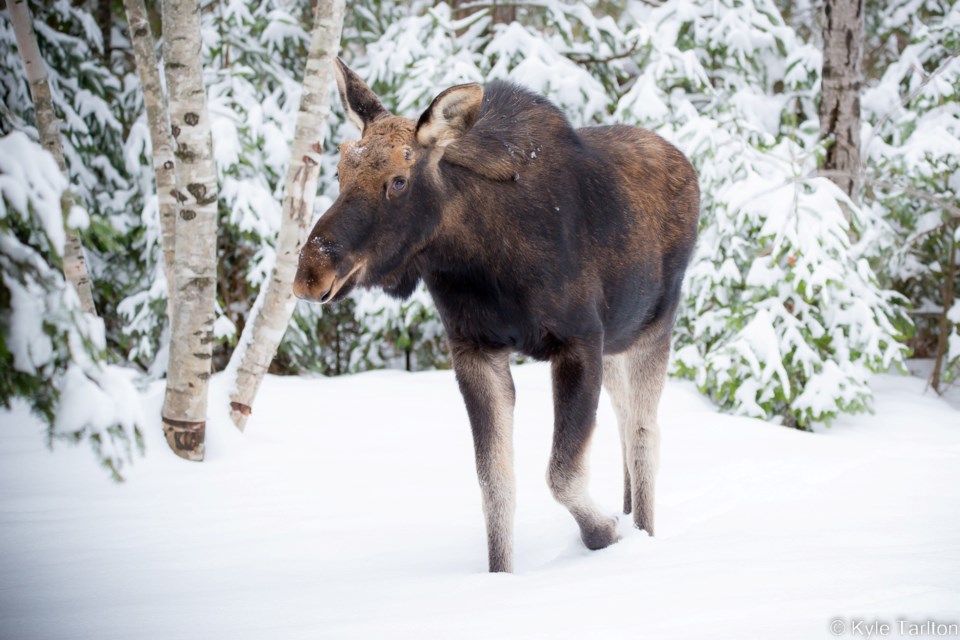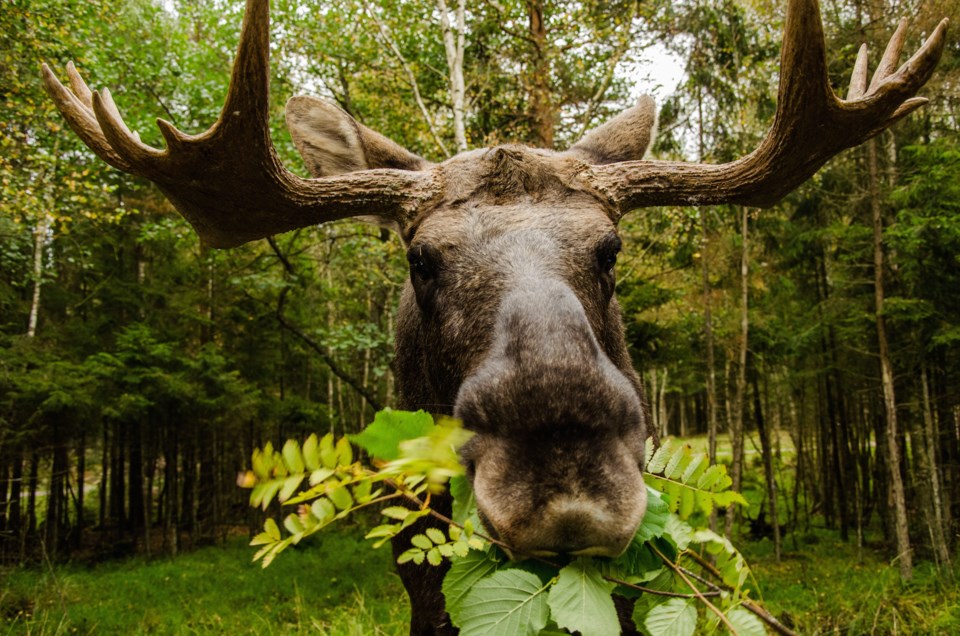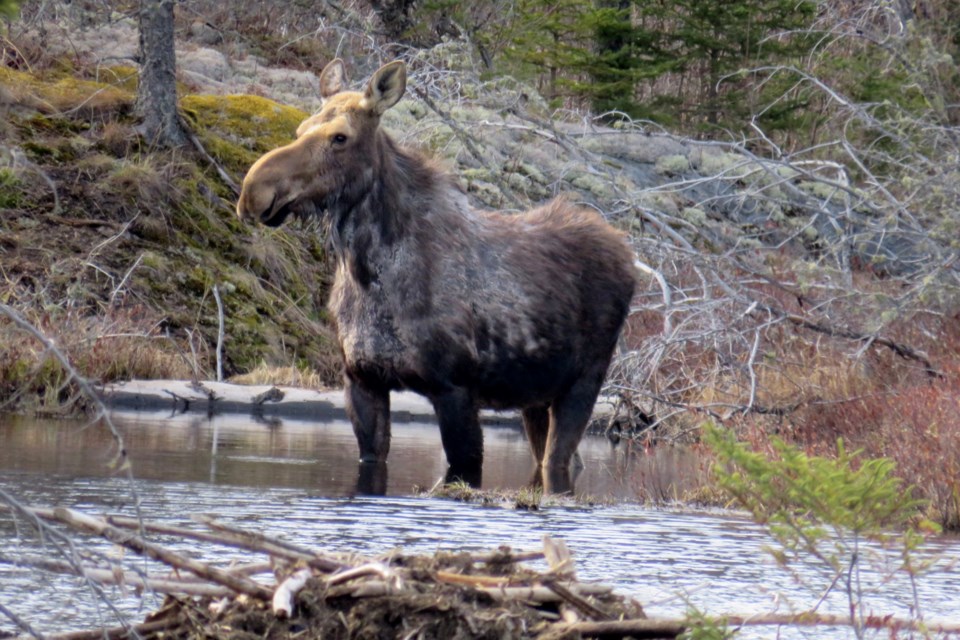I started writing about Ontario’s moose mismanagement in October of 2021.
Initially, it was criticism based on general principles, which you can read here and here. It moved to presenting factual evidence of mismanagement as information became available through the Freedom of Information and Protection of Privacy Act.
Finally, I offered an alternative management system that I knew, based on my 27 years of successfully managing moose, would solve Ontario’s problem and permit the population to grow to over 300,000 from the 67,000 moose it is today.
Several times I implied that “this was my last article”, but here I am again.
Despite the scientific evidence, the Ministry of Natural Resources (MNR), which collected it, and the Ontario Federation of Anglers and Hunters (OFAH), which expects it to be the basis of management, have rejected it in favour of continuing the pattern of overharvest that led to the decline in the first place.
Nothing has been done and the harvest (an indirect measure of the population) continues to decline. Both organizations seem more concerned with self-interest than protecting and rebuilding the moose population.
A friend who continues to hunt moose advised me recently that MNR plans to change the tag distribution system so that more of the 4,500 tags (27 per cent) that are left after the current process get into the hands of hunters.
The proposal is posted in the Environmental Registry for public comment. It should be noted that there are already too many tags to control the harvest effectively, so putting more tags in the field will not help matters.

Only MNR would try to fix an inefficient, awkward and lengthy process with one that is even more confusing and awkward. Why doesn’t that surprise me?
Frankly, it is too confusing for me to fully understand or try to explain in detail, but the details aren’t that important, and you can read them yourself.
The fundamental issue is that MNR is trying to cover their own incompetence by forcing hunters without sufficient points for a tag, not to apply for one. Further, if hunters do not claim a tag that is awarded for their second choice, they will lose all their points.
How can anyone without a PhD in statistics possibly plan to maximize an opportunity to hunt with a tag or in a party with one?
This approach to problems seems to be part of a pattern of forced compliance rather than trying to build a co-operative management system that has hunter support and the support of non-hunters and First Nations, all with the common objective to restore Ontario’s moose to their former abundance. In addition to these “enhancements” there will now be a third step, in case there are still tags left over after the first two. Should we expect a four- or five-step enhancement in the next few years?
I should note that with the existing and proposed processes, certain hunters who get tags do not lose their points. That is completely contrary to the principle that once hunters get a tag, they go to the back of the line. Just another layer of inconsistency that places these hunters before those who have not had a tag for many years. I would expect that this should certainly be unacceptable to most hunters.
There is a major issue in Ontario’s moose management world. Because the moose population is so low and hunters (at least those wishing to hunt) are so many, it is impossible to satisfy everyone.
The majority of hunters have already quit. The current strategy appears to be to satisfy those that remain – even if it results in a continued decline in the population. To start population growth, major changes are required in the form of a reduction in the planned harvest and an effective harvest control system with a one-tag-per-moose strategy. There’s the rub!
All hunters must accept the “cost” of mismanagement by accepting reduced opportunities in the short term so that there may be more and better opportunities in the future. Those who have quit already paid that price. The rest must understand that they, too, will have to accept further reductions in their hunting opportunities or lose moose hunting entirely.
One small step to gain hunter support might be to implement a simple and effective tag distribution system. I had proposed a return to group applications. This tool was never understood or properly explained to hunters by MNR.
To make matters worse, MNR, with the support of OFAH, changed the original tag transfer policy into one that was extremely, and knowingly, abused for 35 years, but never fixed. A transfer policy was essential because some hunters who got a tag for the party might not be able to hunt “for reasons which could not be predicted at the time of application.” This meant death, serious illness or job transfer out of Ontario.

Because of confusion (two connected components, but with totally different functions) and strong resentment toward the transfer policy, MNR opted for individual applications and all the accompanying problems of getting the right number of tags into the hands of a party. The possibility of the tag holder not being able to hunt is still a problem, and MNR addressed this with a policy that is almost impossible for hunters to use and totally inconsistent with the original idea that bureaucratic BS should not be an impediment to the party enjoying their hunt, even the problem arose during the hunting season.
Group applications, with the original transfer policy, lets a group of hunters apply for one tag to save points for future years. One application. One “distribution process”. All tags awarded, (possibly within two weeks of application closing – June 15?). Everyone knows what’s happening with lots of time to plan and organize the hunt. The administrative system just has to be pulled from the boneyard of MNR computer programs and used again.
The problem with group applications is that, at least in theory, there are too many hunters, too few tags and parties, if they applied as one group, would have to be extremely large to get a tag.
There are two realities. The first is that this condition already exists with the current system, but the path to developing a plan for the party is fraught with confusion, multiple applications, multiple choices, and lengthy time delays. Many parties don’t know if they can hunt until August.
The second reality is that parties know who stands a chance of getting a tag. The problem with individual applications is making sure that those with enough points don’t result in the party getting more tags than they want, thus jeopardizing future opportunities.
Group applications protect high-point holders in a very simple way: by allowing them to apply together for one tag. Only the folks with high points expected to get a tag need apply as a group and only the highest point holder in the group is used in the distribution process. Others can apply as individuals or additional groups to accumulate points. No need to resort to an application in WMU 99Z.
Managers can assess the real demand for tags in real units – should they care. Parties with enough points to get several tags could apply in several groups, if they chose. Computer technology could track groups so that only additions or deletions to a party or unit of hunt need be changed each year, reducing the complexity even further.

With so few tags available, the need for second or third choice tag options seems redundant, except as a byproduct of an extremely inefficient distribution system that does not distribute all tags in one step.
While the current and enhanced distribution process might get by, it is still confusing, awkward and lengthy, soon with enhanced confusion and awkwardness. It is questionable whether it will work more efficiently. In contrast, group applications are relatively simple, permit a party to develop a long-term strategy and provide much more time to plan a hunt. It will work in almost any management system. KISS.
From where I sit, hunters in Ontario, especially those who have been driven out of moose hunting by MNR incompetence, and more importantly non-hunters and First Nations, have a choice. You can sit back and watch moose decline, as the scientific evidence suggests it will, or demand better management.
The Environmental Registry asks for comments on the proposed enhancements to the distribution process, but they will pay attention to other comments about the failure of MNR to manage your resources on your behalf. You may leave comments anonymously.
If you care about moose as a hunter, a viewer or just a believer in nature, I encourage you to go to this site and express your views. Read the last two articles noted above to inform yourself about the problem and alternative.
For hunters interested in the distribution process, it’s your decision to support my recommendation or not. I no longer hunt moose, and I won’t be offended if you don’t agree with me. I would be interested in learning about alternative suggestions and will respond.
The comment period for the proposed change ends November 22. Please comment and demand a management system that will rebuild our moose population.\
Alan Bisset is a retired regional moose biologist and wildlife inventory program leader with the former Ministry of Natural Resources. He has written and published many papers on moose management, both Internally and in scientific journals. Bisset lives in Strathroy, west of London, Ont.
— Sudbury.com



